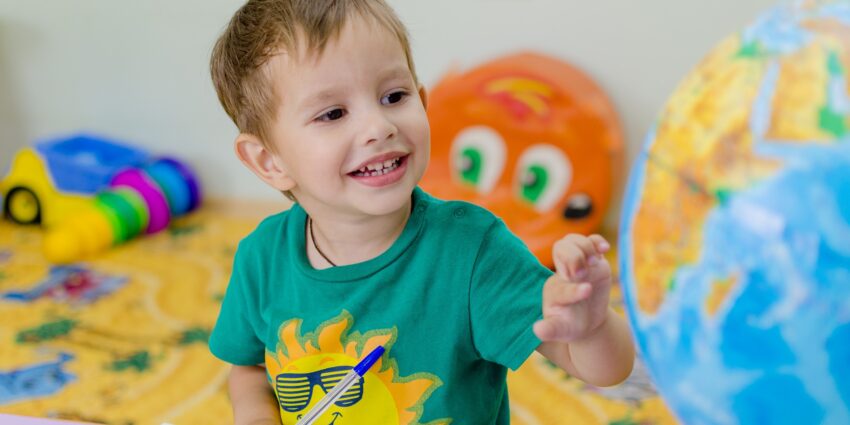If you’re in charge of maintaining clean and healthy schools, restrooms and cafeterias are probably your first area of focus. What many people don’t realize is that clean floors are a crucial part of keeping schools clean, and not just for the sake of appearances. Dirty floors can harbor germs that might cause disease or allergic reactions in a great number of students. If the school has been sitting unused all summer, you can be sure that dust, dirt, and other contaminants have made a home on every surface.
Deep cleaning can reduce allergens and bacteria, dust, dirt, mold, and pollen. It also sets the stage for regularly scheduled sanitizing to help stop the spread of COVID-19, TB, staph infections, meningitis, and other contagious conditions. Being vigilant should be a top priority, and it all starts before school starts.
Healthier Restroom Floors
Restrooms are one of the largest health hazards. In a restroom, it isn’t the dirt you see, it’s the bacteria that you don’t see. The germs take hold in this rich environment and spread to anyone placing a purse or backpack on the floor. Floor-to-ceiling attention is needed to ensure all surfaces are sanitized. Best practices include high-pressure cleaning and disinfection of walls, partitions, floors, urinals, toilets, and sinks. This is a good time for grout repairs too. Keeping restroom floors clean is a necessary step for creating healthy schools. Use a cleaning system that employs tools to scrub the grout and a vacuum that removes the germs and all the moisture on the floor. Start the year off right with pristine bathrooms, and it will be easier to keep up with regular maintenance throughout the year.
Healthier Carpeted Floors
Carpets often contain dirt, mold, and pollutants that love to hide in carpets. In K-5 schools it is especially needed to keep the floors clean for crawling, sprawling, and sitting kids. Not only are dirty carpets unsightly, but they can negatively affect indoor air quality. Studies have shown that properly cleaned carpets help reduce asthma and allergy symptoms. Back-to-school cleaning should include carpet extraction and sanitization. This is also the time to strip and wax hallways and classroom floors. Shiny floors make a great impression, and well-maintained floors last longer.
Healthier Tile Floors
Tile floors are often found in Gyms, weight rooms, locker rooms. Durable and easy to mop, the tile floor is traditionally cleaned after school by the custodial staff. Mopping might make the floor look like it’s clean, but it’s spreading the dirt and germs smoothly over the floor’s surface. These floors can be breeding grounds for TB, staph, and other infectious organisms. Start now with a deep cleaning and sanitization of all surfaces and equipment, and then keep ahead of problems with routine cleaning. Students should also be required to wear footwear while in the gym and flip-flops in locker rooms. Remind them to not share personal equipment and to regularly wash their athletic clothes. With football season approaching, plan to add a weekly misting system to your cleaning procedures, because such systems can kill 99.99% of bacteria. A cleaning system that dispenses cleaning solution before vacuuming the moisture and dirt away is the best option for a clean and healthy tile floor.
Healthier Windows
Windows and lighting contribute to good learning. Windows should be washed inside and out to bring in the most natural daylight. Light fixtures need detailed cleaning also. Replacing old lightbulbs is one of the fastest ways to freshen up your classrooms and hallways. Students and teachers respond well to the crisp white light emitted by new bulbs versus the dimmer, yellow-brown color of older bulbs. While new lights will give your interior a boost it will also show any hidden dirt lurking in corners. Make sure that your cleaning regime tackles overlooked spots, display hardware, and even the parts that no one sees, like the desks and near the cubbies.
Routine cleaning and disinfecting is key to maintaining a safe environment for faculty, students, and staff.
Cleaning removes dirt and most germs and is usually done with soap and water. Disinfecting kills most germs, depending on the type of chemical, and only when the chemical product is used as directed on the label.
Routine cleaning and disinfecting should be done at least once a day (or more, depending on use patterns) on high touch point surfaces and objects such as:
- Face shield
- Doorknobs and handles
- Stair rails
- Classroom desks and chairs
- Lunchroom tables and chairs
- Countertops
- Handrails
- Light switches
- Handles on equipment (e.g., athletic equipment)
- Push-buttons on vending machines and elevators
- Shared toys
- Shared remote controls
- Shared telephones
- Shared desktops
- Shared computer keyboards and mice
- Bus seats and handrails
- Note: Computer keyboards are difficult to clean. Shared computers should have signs posted instructing proper hand hygiene before and after using them to minimize disease transmission. To facilitate cleaning, consider using covers that protect the keys but enable the use of the keys.
We Clean for Health, and in the process create a clean appearance! Our focus as a cleaning company is to create healthy offices, schools, meeting rooms, etc.and to make sure the environment the following day does not promote illness in any way. Regular disinfecting kills bacteria, viruses, and pathogens which is important for all to understand. Here are the CDC Recommended Guidelines for How to Clean and Disinfect Schools.
The industries we service include professional, industrial, financial, health care, educational, retail, and restaurants. Get in touch with Building Service Industries today!

